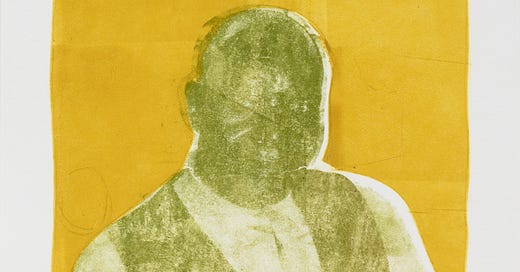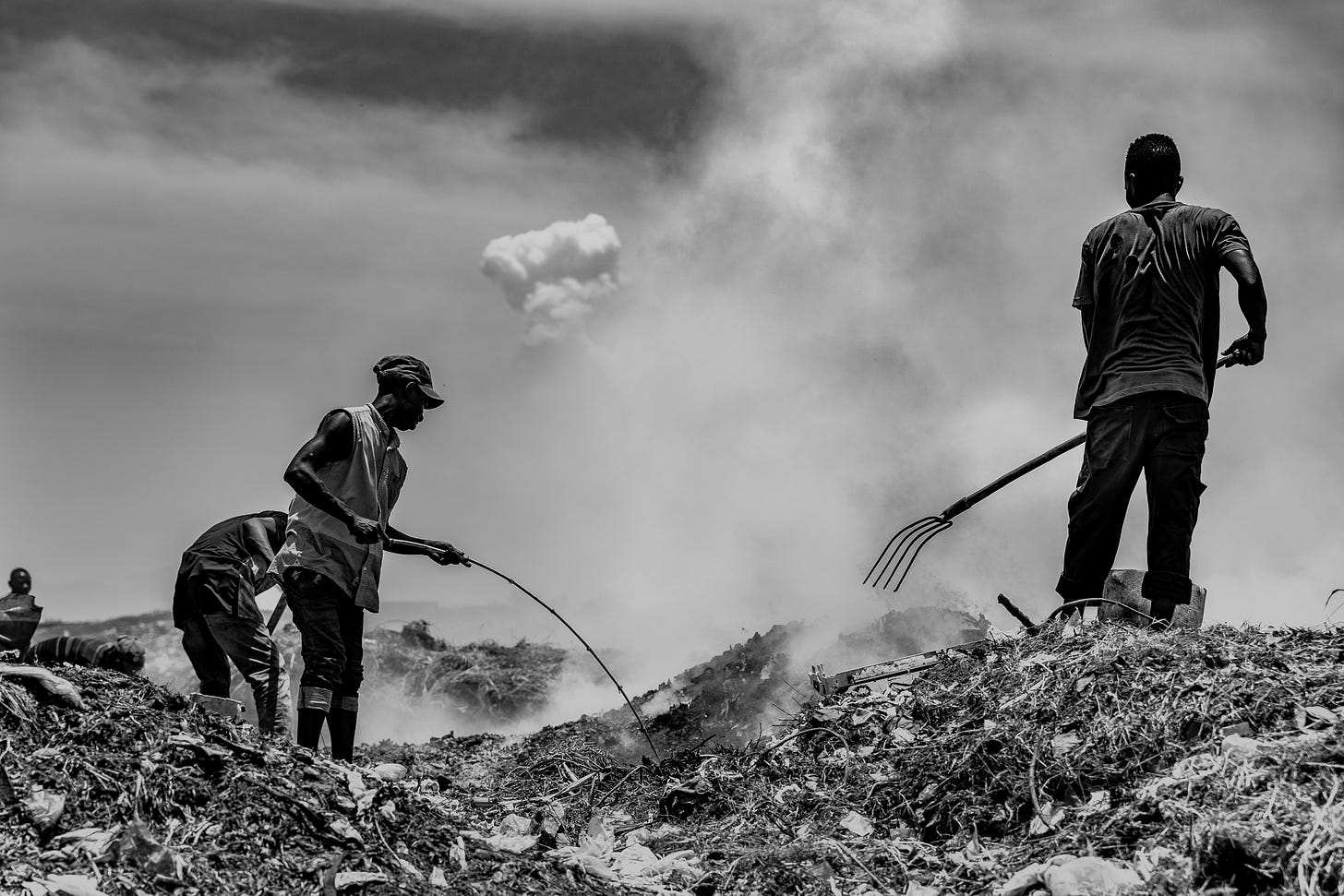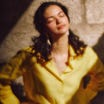In this artwork, a photograph of a man breathes story onto paper. The monochrome portrait bathes his shadows in a textured olive green against a solid mustard yellow backdrop. The materiality of the photograph obscures the details of his features, but his gaze and the hint of a smile hold his expression together.
On the bottom of the image, an intimate handwritten note to a distant past is etched. The words speak of loss – of name, of land, of home. The artwork and its words evoke a desire to touch and to hold, to feel and to grasp.
— Sana Ginwalla
“I always want to intervene in the photographs and have a conversation with them.”
I believe that photography is inherently violent. The opening essay of “In Plato’s Cave,” Susan Sontag declares that, “in teaching us a new visual code, photographs alter and enlarge our notions of what is worth looking at and what we have a right to observe. They are a grammar and, even more importantly, an ethics of seeing.” Therefore, my artistic perspective views photography as aggressive, particularly in the context of the global South and its historical exploitation.
While I capture what I see, I never present the images exactly as they are. I employ alternative printing techniques to manipulate and conceal identities. This fuels my commitment to not directly display faces in my photographs, be it those within my own community or anyone else. I always want to intervene in the photographs and have a conversation with them, which is why I employ alternative printing techniques like lithography and image transfers to alter and conceal identities.
I captured this photograph in 2016, at a funeral in Pomfret using my very first digital camera. It was the first time I'd seen many of these people in a long time. I felt it important to document this moment. A lot of memories came back. The idea of community, of coming together and remembering was important for me. This moment aligned with my focused documentation on portraits and funeral rituals within the Pomfret community at the time.
This piece is reproduced through paper lithography printmaking technique. It holds a special place amongst my favourites as it embodies my approach to photography which utilises the medium for documentation in an unconventional way. On it, I wrote a letter about memory, remembering, and trying to be found. Following the Angolan War, members of my community sent letters back home through the Red Cross, seeking lost family members. These letters would include a photograph as visual references together with people’s names and the names of their villages. Sometimes they would receive a response containing another photograph sent back – an update on their loved one's appearance, a visual testament to their continued existence. These photographs of known anonymous people residing in family albums hold profound significance for me. They serve as self-portraits – “this is me now” or “this is how I’ve aged” – sharing tangible proof of life itself.
— Helena Uambembe
About Helena Uambembe
Helena Uambembe (1994, Pomfret, South Africa) is an artist of Angolan descent whose work is heavily influenced by her heritage and experiences. Her parents fled the civil war in Angola and her father was a soldier in the 32nd Battalion of the South African Defence Force. Uambembe's artistic practice explores themes of the 32nd Military Battalion and her Angolan heritage. She obtained her Btech in 2018 from Tshwane University of Technology in South Africa and is a member of the collective Kutala Chopeto. In 2019, Uambembe won the David Koloane Award and completed a two month residency at the Bag Factory in Johannesburg. She has also performed at the FNB Art Joburg and Underline Projects. In 2022, Helena was awarded the prestigious Art Basel Baloise Art Prizefor her series WHAT YOU SEE IS NOT WHAT YOU REMEMBER which was presented by Jahmek Contemporary Art. In 2023, Uambembe was awarded the DAAD Visual Arts Fellowship in Berlin, Germany, which supports international artists to develop their work through a residency program. More of her work can be found on Instagram and via these features on Art News Africaand Contemporary And.
LAST WEEK — “Junk Hunters” by Fabrice Mbonankira
I have been working for a while on a philanthropic photography project with a group of women who live off the largest landfill in the city of Bujumbura. I came across these young scrap metal hunters looking in this same dump that day. My interest in them came suddenly, and that’s how I made this trip with them through these photos. They allowed me to follow them to the sites where they hunt their loot.
This is the 110th edition of this publication, edited by Sana Ginwalla, one of our editorial fellows. The newsletter also read on web (best for viewing images), and via the Substack iOS/Android apps.
TENDER PHOTO is a newsletter on African photography. Every Wednesday we feature a photograph and a short caption about it, and include a statement from the photographer. Last year, we published commentaries or photo-essays in response to photographs previously featured on the newsletter, including CORRESPONDENCES, CONCORDANCE, KINDRED, and INDEX. The ongoing series, AFFINITIES, will run from March 1–April 26.
Our goal is to work with African photographers by creating a platform in which they lead the cataloguing and engagement with their work.
Thank you for reading. If this newsletter was shared with you, consider subscribing, or forward to a friend. Please whitelist the newsletter to ensure you never miss it.







so lovely